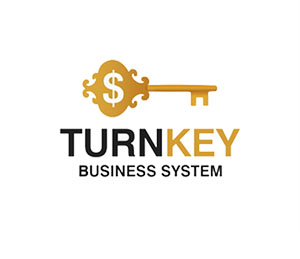How to Pass Prop Firms Challenges: A Deep Dive into Modern Trading Tests

How to Pass Prop Firms Challenges: A Deep Dive into Modern Trading Tests
Modern prop trading companies (prop firms) are becoming a real social lift for traders: they give capital to those who can prove their profitability. But to reach the coveted funded account, you need to pass a "challenge" - a test of discipline, strategy and psychology.
Prop Trading as a Phenomenon
In the past, a professional trader was associated with either a bank, a hedge fund, or a large personal capital. Today, the model has changed. Prop firms allow anyone - a student, an IT specialist, a nurse, a former military man - to try their hand at financial markets. Place of residence, degree or experience do not matter: only the result decides.This democratization of the profession is largely due to digital platforms and the development of risk management. Companies have realized that it is easier to provide access to capital of hundreds of thousands of dollars and share the profits than to try to guess the future "star trader" by his resume.

How to Pass Prop Firms Challenges: A Deep Dive into Modern Trading Tests
What is the Prop Firm Challenge?
However, no one will give away tens or hundreds of thousands of dollars without verification. For this purpose, an evaluation system, or "challenge", was created. The candidate is given a demo account with real market conditions, where he is required to:earn a certain percentage,
do not go beyond the drawdown limits,
show discipline over several trading days.
If the trader passes the test, he gets a funded account. Then everything is simple: the profit is divided between the company and the trader, usually 80/20 or 90/10 in favor of the trader.
Logic of the rules
At first glance, the conditions may seem strict: you can’t lose more than 5% per day, you can’t go into a drawdown of more than 10%, and the profit targets are 6–10%. But there is some logic to this.The challenge is not a test of the trader's genius, but a test of his stability. You can guess the market once, but the company is looking for those who are able to consistently control the risk. That is why not only the percentage of profitability is important, but also the number of trading days: otherwise, the trader can "shoot" in two days and disappear.
Example: John Miller's Path
To better understand the mechanics of the challenge, let's look at a specific case.
John Miller, 32, Texas . He was a systems administrator by profession, but he always had a passion for markets. During the pandemic, he began actively trading on his own account and soon decided to try his hand at a prop firm.
The terms of his challenge were: $50,000 demo account, +8% profit target, daily loss limit of 5% of the account, total drawdown limit of 10%, plus a minimum of 5 trading days.
Stage 1 — preparation.
Before entering the challenge, John trained on a demo for a month. He built a strict strategy: risk no higher than 1% per trade, clear stop losses, and mandatory checking of news before entering.
Stage 2 – trading.
The first two days he successfully caught the movement in EUR/USD and gold, earning +3%. On the third day the market went against him, but a tight stop loss kept the losses within the rules. John noted later: “The hardest thing was not to fight back immediately, but to stop and wait for a new setup . ”
Stage 3 — result.
By the seventh day, the account had grown by +8.4%. To meet the requirement for the number of trading days, he opened minimum trades for two more days. As a result, the prop firm gave him a funded account for $50,000 with a profit split of 80/20. In the first month on a real account, John showed +12% profit, confirming that discipline is more important than emotions.
Why Challenges Are Good for Traders
It is interesting that many traders after passing such tests note: it is the strict rules that help them grow. Limits on drawdown and daily losses discipline more than your own account. After all, you can "sit out" or "recoup" your personal money later, but a prop company may not have a second chance.In addition, challenges help to weed out chaotic players. If a trader relies only on luck, he will fail already at the first stages. But those who can control risk and think systematically quickly reach a new level.
Variety of formats
There are dozens of challenge formats on the market today. Some focus on forex, some on futures. Some companies offer free tests (though with modest accounts), others offer multi-stage checks. There are even options with a fixed salary for traders who have proven their results.At the same time, the industry is still poorly regulated. There are "dummy" companies that only collect money for challenges and do not issue real funded accounts. Therefore, reviews and reputation remain the key filter.
The Future of Prop Firms
Experts believe that prop trading will only grow. On the one hand, it solves the personnel issue for the industry: there is no need to look for talents at universities, the market itself identifies the best. On the other hand, it opens the doors to thousands of people around the world, giving a chance to trade large sums without their own capital.! In the next 1-2 years, we can expect challenges to become more complex: companies will tighten risk management, introduce new sustainability metrics, and more actively implement AI to evaluate traders. But for disciplined players, this will not be an obstacle, but rather proof of their professionalism.
Conclusion
Prop firms are not just a “chance to make money on someone else’s capital.” They are a test of a trader’s maturity. Can you be disciplined, cool-headed, systematic? This is what the challenge tests. And the successes of people like John Miller show that it is possible to pass the test. But only for those who perceive trading not as a casino, but as a business.
By Miles Harrington
September 09, 2025
Join us. Our Telegram: @forexturnkey
All to the point, no ads. A channel that doesn't tire you out, but pumps you up.









Report
My comments